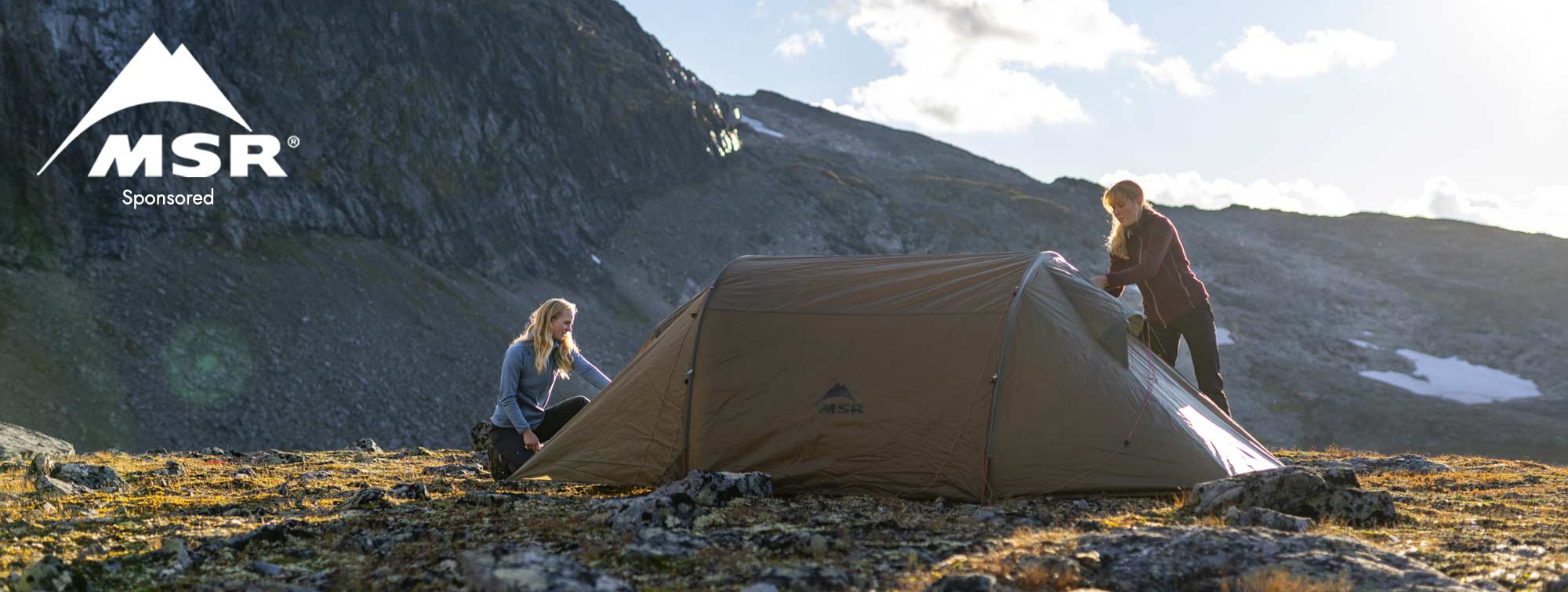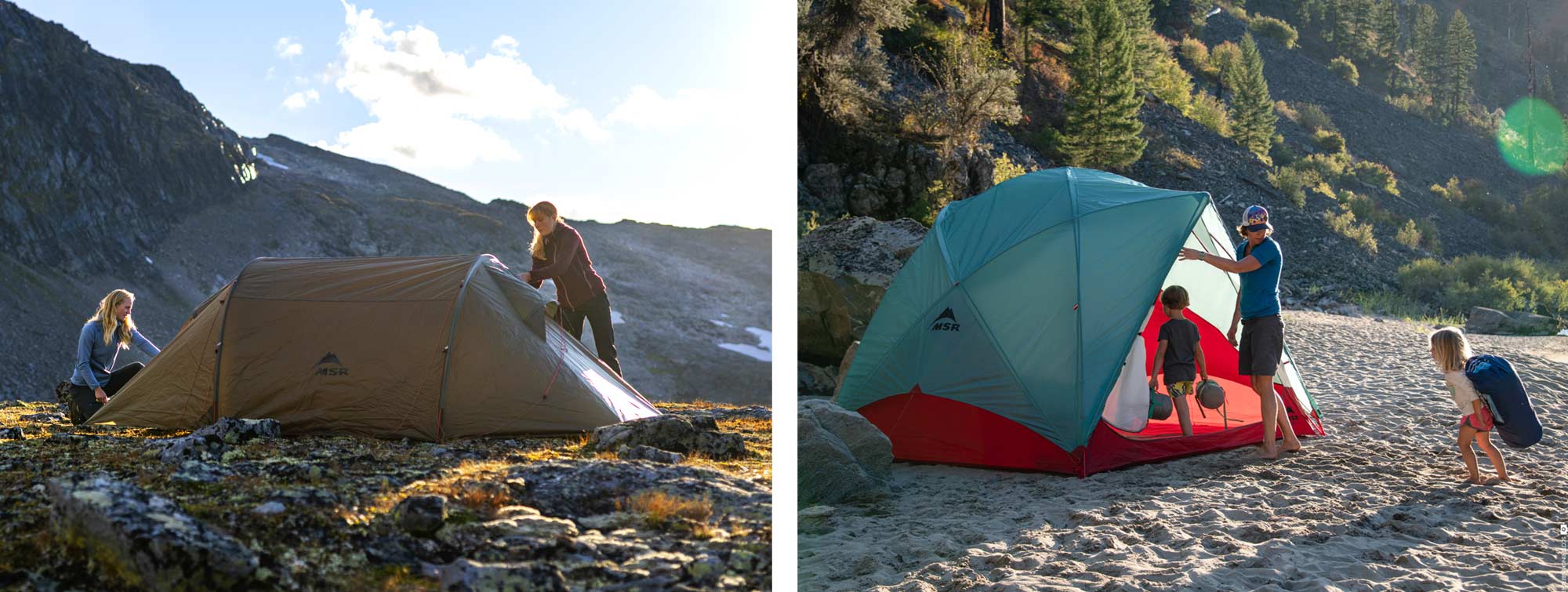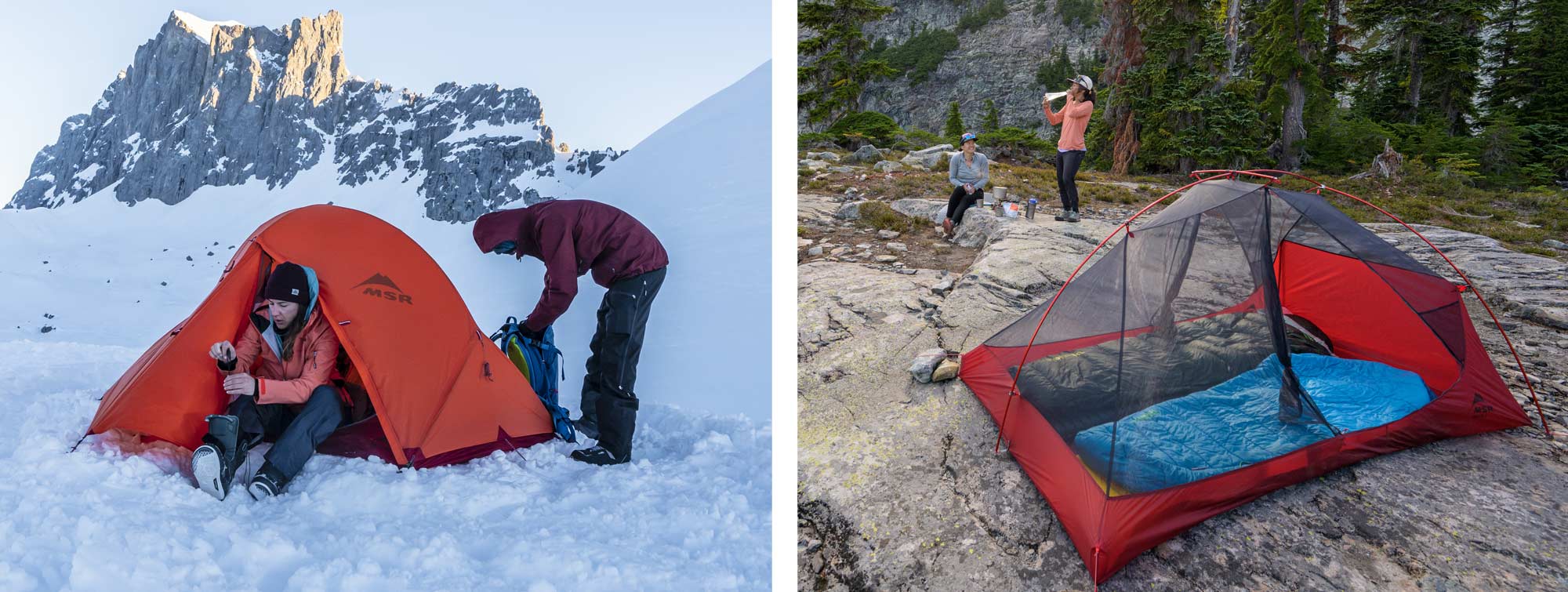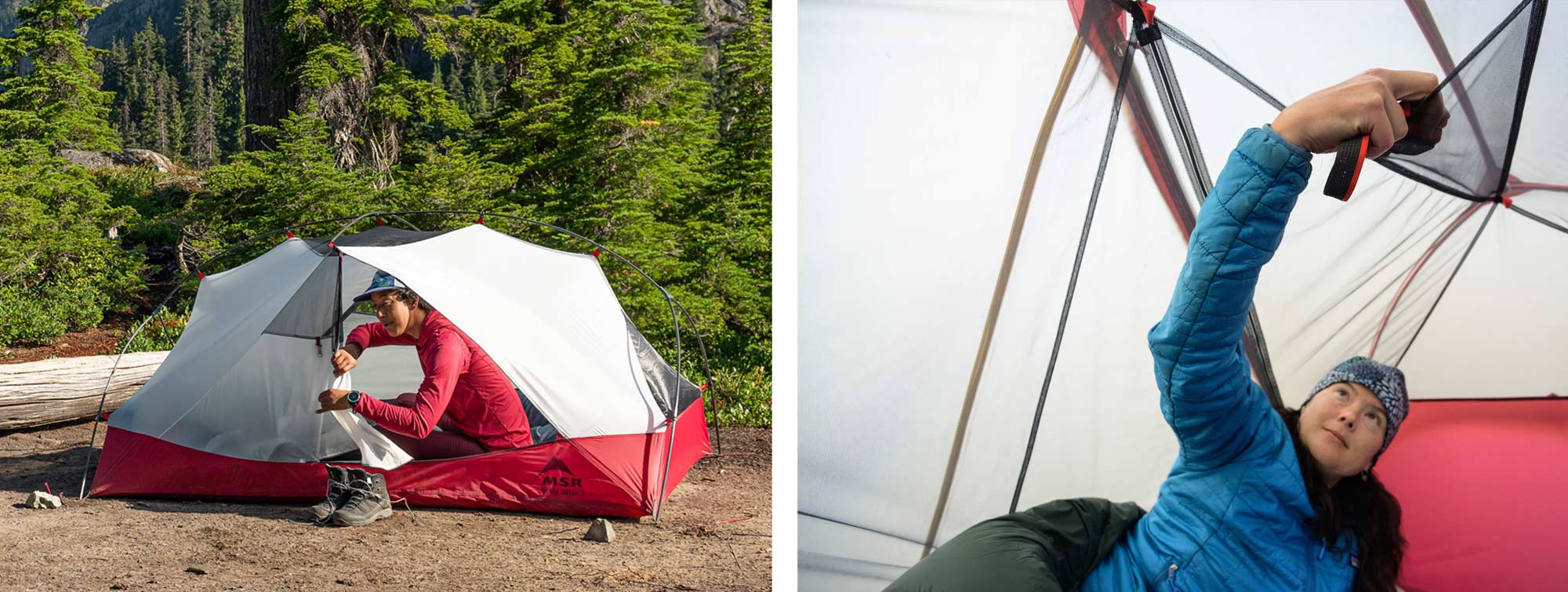Choosing a Tent
Posted by Andy Neil on Mar 29, 2023

We have many tents here at Basecamp Gear, ultralight one-person tents for long-distance hikers, expedition tents designed to withstand arctic blasts, and large family "basecamp" tents, which you can use as a base to explore an area on holiday. Because we have a large variety of tents, we've written this guide to ensure you get the correct tent for your next adventure.
For many of our customers, weight is an important issue when purchasing a tent. If you carry your tent from campsite to campsite, less weight on your back means more miles underfoot. Because of this, we weigh each tent ourselves. Manufacturers often quote a weight, but we, sometimes find them inaccurate, so we strive to give our customers as much information as possible. We weigh the inner tent, the flysheet and the poles without the tent bags or the tent pegs. We exclude the tent bags because you don't always need them, and we exclude the tent pegs because you could buy lighter or more robust ones.
Tent Styles
Ultralight Weight Tents: Long distance walkers, thru-hikers, bikepackers, and climbers are all looking to carry as little weight as possible, they all need a place to bed down for the night, and we have an array of tents on offer for those gram-conscious customers. Not always, the most robust or roomie, lightweight tents are perfect for those who are moving fast and light over long distances, and are happy to sacrifice some "home comforts " to save weight.
Expedition Tents: Tents for the adventurous, expedition tents are well suited to wild campers, summit sleepers and intrepid customers heading to some of the wilder places. Expedition tents are designed to handle extreme weather and have superior build quality. They are heavier and more expensive than lightweight tents and are overkill if you use them at a campsite or for low-level wild camping.
Basecamp Tents: Basecamp and family tents are your traditional holiday campsite tents, often used by our customers as a "basecamp" somewhere to set up as a home and explore a region, such as the lake district. Large and spacious, with many home comforts, these heavy tents accommodate many people and have much more significant "liveable" space.

Technical Cotton Tents: Similar to basecamp tents, cotton tents are heavy, robust tents that can house many people. Capable of being semi-permanent shelters, cotton tents are suitable for all-year-round use; they retain heat well (often a portable fire can be accommodated inside), are good at shedding rain, and stand up well to terrible weather. They are cumbersome, take time and practice erecting, and can be overkill, especially for short trips.
Bike Packing Tents: Similar to ultralight tents, bikepacking tents are transportable and packable and are designed to fit in small handlebar bags, so that that can easily be strapped to a bike. They will have shorter pole section lengths than traditional tents to keep the pack size as small and as possible; they will often have additional storage solutions for helmets and such.
Seasonal Ratings
Tents are separated into two seasonal categories, 3-season and 4-season tents.
Four-season tents and our expedition tents are made from heavier fabrics with a higher waterproof rating and are designed to stand up to more extreme weather, including heavy snow and howling wind; the rain-fly will extend right to the floor to prevent wind, rain and snow from entering the tent. The inner tent will be made from fabric instead of mesh to retain heat better.
Three-season tents, however, are much lighter; the rain cover and vestibule will sit off the ground to provide as much ventilation as possible, which helps prevent condensation. They are designed to have increased ventilation which reduces condensation.
As Four Season and expedition tents are generally heavier than their 3 season counterparts, if you don't need 4 season performance, you are carrying significantly more weight for no reason. In warmer climates, your tent will be uncomfortably hot. Our view is to get the tent most suited to your backpacking type.
One Person Tents
One-person tents, lightweight or expedition, are light, low profile and packable, the most portable tents we do. They take up little floor space so you can pitch them just about anywhere. However, they can be cramped, not somewhere you want to spend much time.
Two Person Tents
The jump from one man to two can add a little weight, but it vastly increases the room inside the tent to accommodate you and a tent partner. If you are sharing a tent with a partner, you don't want to have to be clambering over each other in the middle of the night, so my primary consideration with a two-person tent is how many doors does it have?
Many people prefer the space of a two-person tent just for themselves. There is plenty of room to keep gear inside the tent, a luxury many one-person tents don't offer. Two-person tents allow you to sprawl out, so if you are in the tent for long periods due to bad weather or are on a long-distance trek, you have a much more excellent place to hang out.

3+ Person Tents
The more people sharing the tent, the larger and heavier the tent will undoubtedly be, and the more likely the tent will be used as a base camp. A three-person tent will be much larger, have a lot more headroom and will often have separate rooms to sleep in as well as a communal area to cook in or to hang out; they may have more extensive porches for gear storage and may have multiple doors.
Other Considerations
Free-Standing vs Pitched: A free-standing tent is a tent that will stand by itself without any additional pegs - though you usually need to peg it out to make it taught and stop it from blowing away! You will always get a consistent pitch; the tent can even be picked up and moved to a more desirable spot if required. Perfect in rocky conditions when you cannot get tent pegs in the ground.
Pitched tents rely on tent pegs and guy lines for support; they can take practice to get the pitch just right.
right.
Inner Pitch First vs Inner and Outer Together: Traditionally, most double-skinned tents require the inner tent to be pitched first, then the flysheet is attached and pegged out. In bad weather, this could mean the inside of your tent is open to the elements and could get the inner of the tent wet. This isn’t a massive concern for me, as the time between the inner going up and the fly going over the top is minimal. However, some disagree and want a tent that pitches inner and outer at the same time. The tents that pitch inner and outer first tend to be four seasons and, therefore, generally heavier.
Single-Skin vs Two-Skin Tents: Single-skin tents are a fantastic way to shave weight, though they come with a caveat: condensation, which undoubtedly will be an issue at some point. Condensation is not necessarily a problem; mopping pooled water with a cloth is a simple and easy fix, but some do not wish to deal with this, especially in the morning. With two skin tents, water vapour from your breath passes through the inner tent and the condensation forms inside the flysheet.
Gear Storage: Most tents provide at least one pocket to store items you need close at hand, such as medication or glasses. However, some manufacturers, have turned gear storage into an art form and excel at creating pockets in nooks and crannies to keep your gear organised and close at hand.

